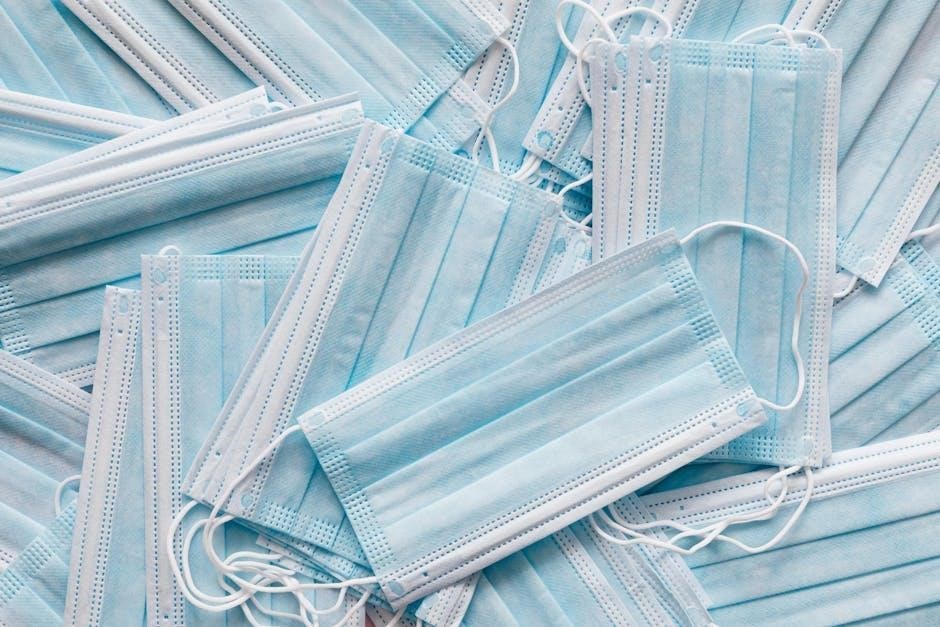Surgical sutures are medical devices used to close wounds and repair tissues. They are essential for preventing infection and supporting healing. Historically, sutures evolved from natural materials like catgut to synthetic alternatives, enhancing safety and effectiveness. Their development and classification are crucial in surgical practices, ensuring optimal tissue repair and minimizing complications.
1.1 Definition and Purpose of Surgical Sutures
Surgical sutures are medical devices used to close wounds and repair tissues. They consist of a thread and a needle, designed to bring tissue edges together, promoting healing. The primary purpose of sutures is to restore tissue integrity, prevent infection, and minimize scarring. They are essential in surgeries, injuries, and lacerations, providing temporary or permanent support. Sutures can be absorbable, degrading naturally, or non-absorbable, requiring removal. Their design and material vary, catering to different surgical needs, ensuring optimal tissue repair and patient recovery.
1.2 Historical Development of Sutures
The history of surgical sutures dates back to ancient civilizations, with early materials like animal intestines and plant fibers. The Edwin Smith Papyrus (circa 1600 BCE) describes their use. In the 19th century, sterile techniques emerged, reducing infection risks. The 20th century introduced synthetic materials, enhancing safety and performance. Modern sutures now offer options like absorbable, non-absorbable, monofilament, and multifilament types, tailored for specific surgical needs. This evolution reflects advancements in medical science and technology, improving patient outcomes globally.
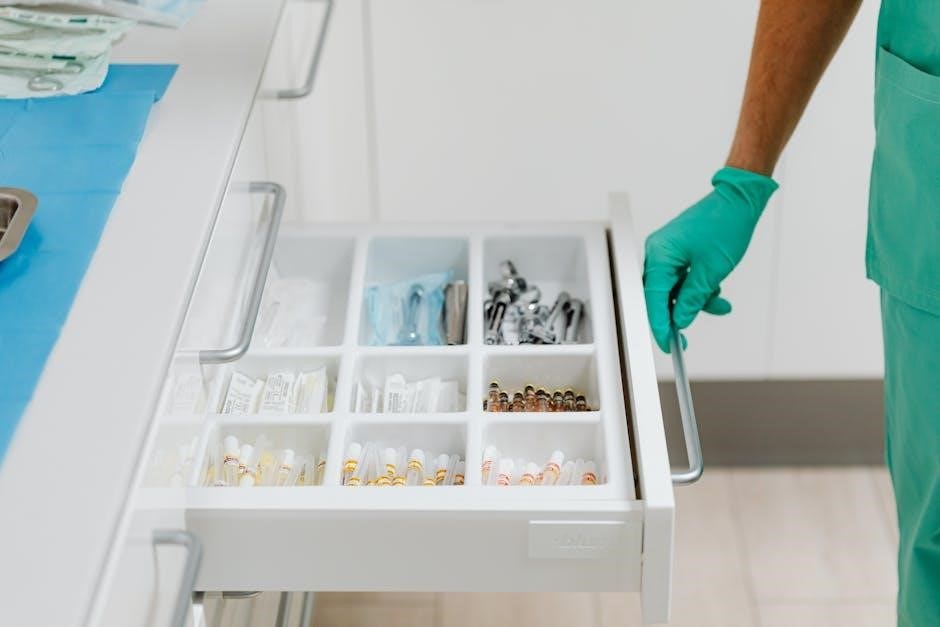
Classification of Surgical Sutures
Surgical sutures are classified into absorbable and non-absorbable types, with further distinctions in material (natural or synthetic) and structure (monofilament, multifilament, or barbed), addressing diverse surgical needs.
2.1 Absorbable vs. Non-Absorbable Sutures
Absorbable sutures, such as Vicryl and Monocryl, degrade naturally in the body, making them ideal for internal wounds. Non-absorbable sutures, like Nylon and Prolene, remain intact and require removal. The choice depends on tissue type, healing needs, and whether the suture is internal or external. Absorbable sutures eliminate the need for removal, reducing patient discomfort, while non-absorbable sutures provide long-term support, often used in skin closure. Both types are essential in surgical practices, catering to different wound healing requirements and surgical scenarios.
2.2 Natural vs. Synthetic Sutures
Natural sutures, like catgut and silk, are derived from organic sources, offering good tissue compatibility. Synthetic sutures, such as Vicryl and PDS, are man-made, providing consistent quality and performance. Natural sutures are often absorbable, while synthetic options can be both absorbable and non-absorbable. Synthetic sutures generally have lower tissue reaction rates and predictable degradation times, making them preferred in modern surgery. Natural sutures, though historically significant, are less commonly used today due to concerns about variability and antigenic responses.
2.3 Monofilament vs. Multifilament vs. Barbed Sutures
Monofilament sutures consist of a single strand, offering smooth passage through tissue and minimal friction. Multifilament sutures are braided, providing greater knot security and flexibility. Barbed sutures feature tiny projections that anchor the suture in place, reducing the need for knots. Monofilament sutures are less likely to harbor bacteria, making them ideal for contaminated wounds. Multifilament sutures are commonly used for their strength and ease of handling, while barbed sutures are favored in procedures requiring minimal tissue tension, such as cosmetic or laparoscopic surgeries.
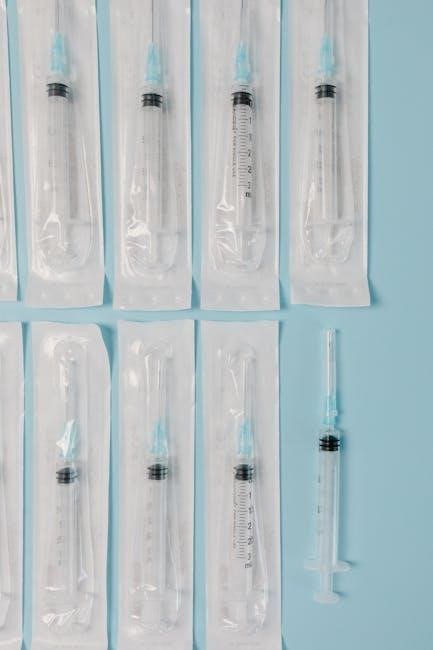
Types of Absorbable Sutures
Absorbable sutures decompose naturally in the body, eliminating the need for removal. Examples include Catgut, Vicryl (Polyglactin), PDS (Polydioxanone), and Dexon (Polyglycolic Acid), each offering unique absorption rates.
3.1 Natural Absorbable Sutures (e.g., Catgut, Chromic Gut)
Natural absorbable sutures are derived from animal tissues. Catgut, made from intestinal linings, is a traditional choice. Chromic gut, treated with chromic acid, offers prolonged strength and slower absorption. These sutures are ideal for deep tissue or temporary wound closure, as they are metabolized by the body, reducing the need for removal. However, they may cause tissue reactions and are less predictable in absorption compared to synthetic alternatives. Their use is declining due to advancements in synthetic materials.
3.2 Synthetic Absorbable Sutures (e.g., Vicryl, PDS, Dexon)
Synthetic absorbable sutures, such as Vicryl (polyglactin), PDS (polydioxanone), and Dexon (polyglycolic acid), are made from man-made polymers. These sutures offer consistent absorption rates and high tensile strength, making them ideal for internal wound closure. Vicryl is often used in general soft tissue surgery, while PDS is favored for its prolonged strength, suitable for hernia repairs. Dexon, known for its rapid absorption, is commonly used in pediatric and gynecological procedures. Synthetic sutures generally cause fewer tissue reactions compared to natural absorbable sutures, enhancing patient comfort and healing outcomes.
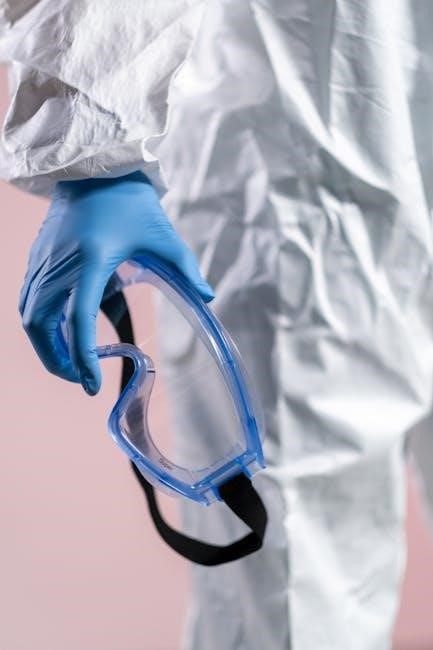
Types of Non-Absorbable Sutures
Non-absorbable sutures, such as Nylon and Prolene, are durable and resistant to infection. They are commonly used for skin closure and cardiovascular surgeries, offering flexibility and minimal tissue reaction.
4.1 Natural Non-Absorbable Sutures (e.g., Silk, Cotton)

Natural non-absorbable sutures, like silk and cotton, are derived from organic sources. Silk is known for its smooth texture and minimal tissue reaction, making it ideal for skin closure. Cotton sutures are less commonly used due to their higher risk of causing inflammation. Both materials are non-reactive and provide strong tensile strength, though they require removal post-healing. These sutures are preferred in superficial wounds and are often chosen for their cost-effectiveness and availability.
4.2 Synthetic Non-Absorbable Sutures (e.g., Nylon, Prolene)
Synthetic non-absorbable sutures, such as nylon and prolene, are crafted from man-made polymers. These materials are known for their durability, resistance to infection, and consistent performance. Nylon sutures are flexible and maintain their strength over time, while Prolene, made from polypropylene, is lightweight and minimally reactive. Both are ideal for deep tissue and cardiovascular surgeries, as they provide long-lasting support without being absorbed by the body. Their synthetic nature ensures uniformity and eliminates the risk of allergic reactions, making them a preferred choice in modern surgical practices.

Suture Size Classification
Suture sizes are classified using the U.S. Pharmacopeia (USP) and metric systems, based on thread diameter. Smaller numbers indicate thicker sutures, ensuring precise wound closure and tissue compatibility.
5.1 U.S. Pharmacopeia (USP) Classification
The U.S. Pharmacopeia (USP) classification system categorizes sutures by diameter, with smaller numerical values indicating larger thread sizes. For example, USP 6-0 is finer than USP 2-0. This standardized system ensures consistency across manufacturers, aiding surgeons in selecting the appropriate suture size for specific procedures. The USP classification is widely recognized and applied globally, providing a reliable reference for surgical practices. Its clear and uniform grading helps prevent errors and enhances surgical outcomes by matching suture size to tissue type and procedure requirements.
5.2 Metric Classification of Suture Sizes
The Metric classification measures suture diameter in tenths of a millimeter, providing a precise and standardized system. For example, a 0.1mm suture is finer than a 0.5mm one. This method ensures uniformity and clarity, making it easier for surgeons to select the appropriate size. The Metric system complements the USP classification but offers a more direct measurement approach. It enhances consistency across manufacturers and reduces sizing errors. This classification is particularly useful for procedures requiring exact tissue compatibility, ensuring optimal wound closure and healing outcomes.
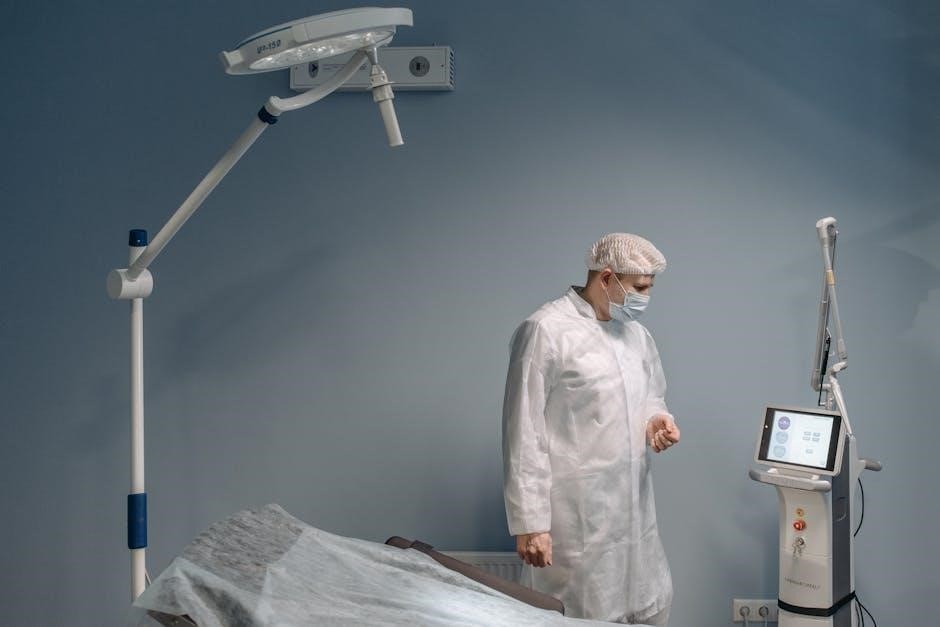
Specialized Sutures
Specialized sutures include antimicrobial-coated and retention sutures. Antimicrobial sutures reduce infection risk, while retention sutures relieve tension in high-stress wounds. They address specific surgical needs effectively.
6.1 Antimicrobial-Coated Sutures
Antimicrobial-coated sutures are designed to reduce the risk of surgical site infections (SSIs). These sutures are treated with antimicrobial agents, such as triclosan or iodine, which inhibit bacterial growth. Studies show that antimicrobial sutures can significantly lower infection rates compared to uncoated sutures. They are particularly beneficial in high-risk surgical environments or for patients with compromised immune systems. While effective, they are not a replacement for proper wound hygiene and sterile techniques. Their use is recommended in procedures where infection risk is elevated, ensuring enhanced patient safety and outcomes.
6.2 Retention Sutures
Retention sutures are large, strong sutures used to relieve tension on wound closures, particularly in high-tension areas like the abdomen. They are typically placed through deeper layers of tissue, providing structural support and preventing wound dehiscence. Unlike standard sutures, retention sutures are not absorbed by the body and must be removed post-operatively. They are often used in complex or high-risk surgeries to ensure the integrity of the wound closure. Their application is critical in cases where excessive strain on the surgical site is anticipated, making them a vital tool in minimizing post-surgical complications and promoting healing.
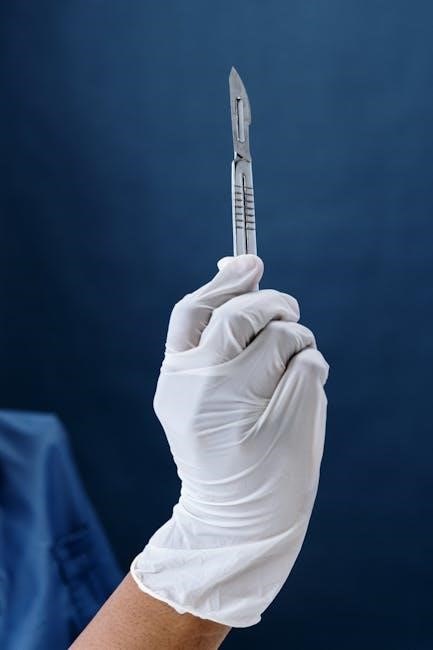
Surgical Needle Types
Surgical needles vary in shape, length, and type, with options like single-armed or double-armed sutures. Their design suits specific tissues and surgical techniques, ensuring precise wound closure.
7.1 Shape and Length of Surgical Needles
Surgical needles vary significantly in shape and length, tailored for specific procedures and tissues. Common shapes include straight, curved, and half-curved, each suited for different surgical needs. Lengths range from short, fine needles for delicate tissues to longer ones for deeper or thicker tissue repair. The needle’s geometry ensures precise placement, minimizing tissue trauma. Sharp tips penetrate easily, while blunt tips reduce accidental punctures in sensitive areas. The combination of shape and length optimizes suture placement, enhancing surgical accuracy and patient outcomes.
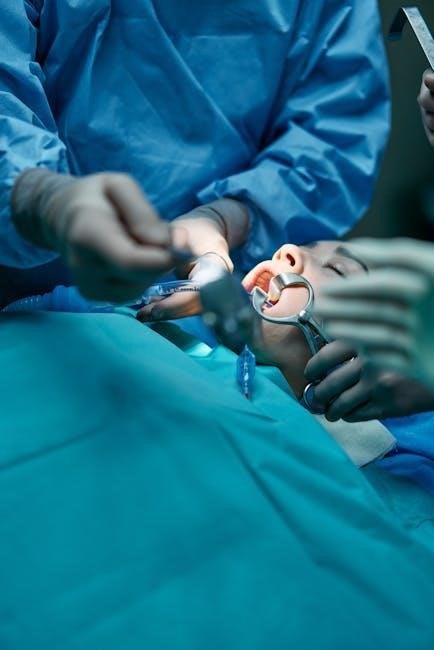
7.2 Single-Armed vs. Double-Armed Sutures
Surgical sutures are categorized as single-armed or double-armed based on the needle configuration. Single-armed sutures have one needle at one end, suitable for continuous or interrupted stitches. Double-armed sutures feature two needles, one at each end, allowing for quicker and more efficient stitching, especially in deep or complex wounds. The choice between them depends on the procedure’s complexity, tissue type, and surgeon preference. Each design offers distinct advantages, enhancing surgical efficiency and precision in wound closure.
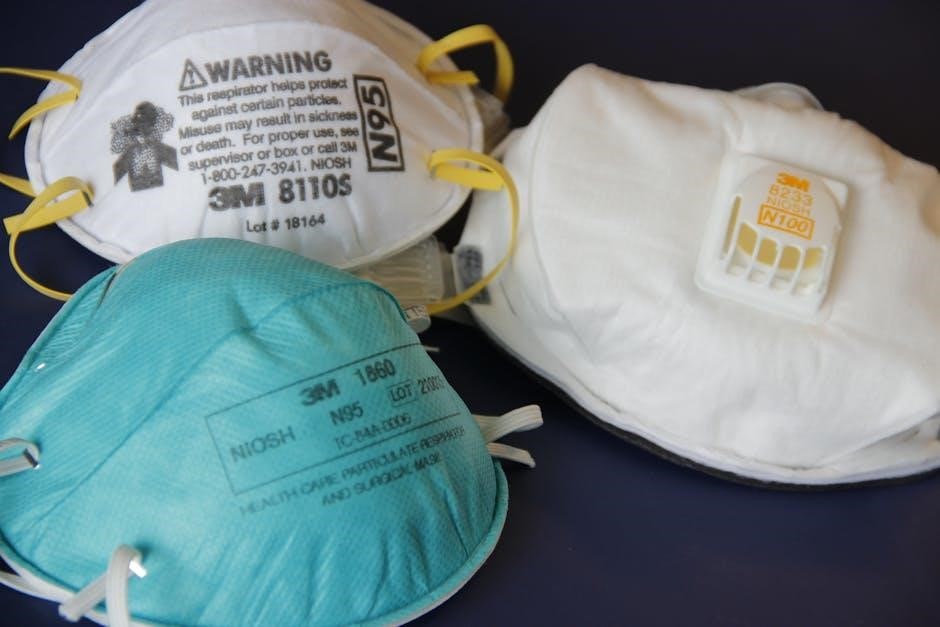
Factors Influencing Suture Selection
Tissue type, healing characteristics, wound location, and environment significantly influence suture choice. Tissue strength, infection risk, and cosmetic outcomes guide decisions, ensuring optimal wound closure and patient recovery.
8.1 Tissue Type and Healing Characteristics
Tissue type and healing characteristics play a crucial role in suture selection. Different tissues, such as skin, muscle, or intestinal walls, have varying strengths and healing rates. Absorbable sutures are preferred for internal tissues like intestines or liver, as they degrade naturally, while non-absorbable sutures are ideal for skin or tendons, which heal slower. The suture material must match the tissue’s healing timeline to avoid complications. Additionally, the suture’s tensile strength and biocompatibility must align with the tissue’s metabolic activity to prevent adverse reactions and ensure proper wound closure.
8.2 Wound Location and Environment
The location and environment of a wound significantly influence suture selection. For example, sutures used in facial areas prioritize minimal scarring, often opting for non-absorbable materials like nylon or polypropylene. In contaminated or infected wounds, antimicrobial-coated sutures may be chosen to reduce infection risk. Wound depth and tissue layers also guide the choice, with deeper wounds requiring stronger sutures. Additionally, sutures for high-tension areas, such as abdominal walls, must provide durable support. The environment, whether sterile or contaminated, further dictates the appropriateness of absorbable versus non-absorbable options.
